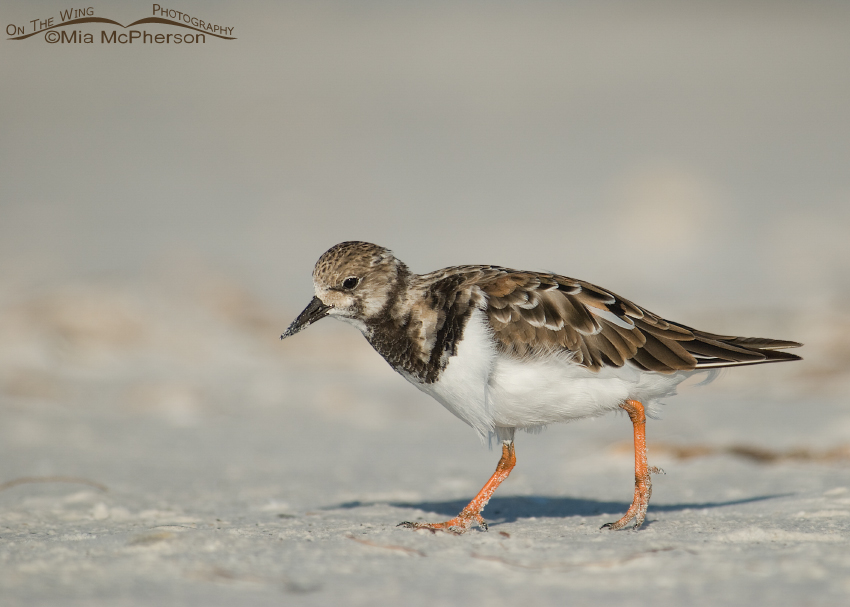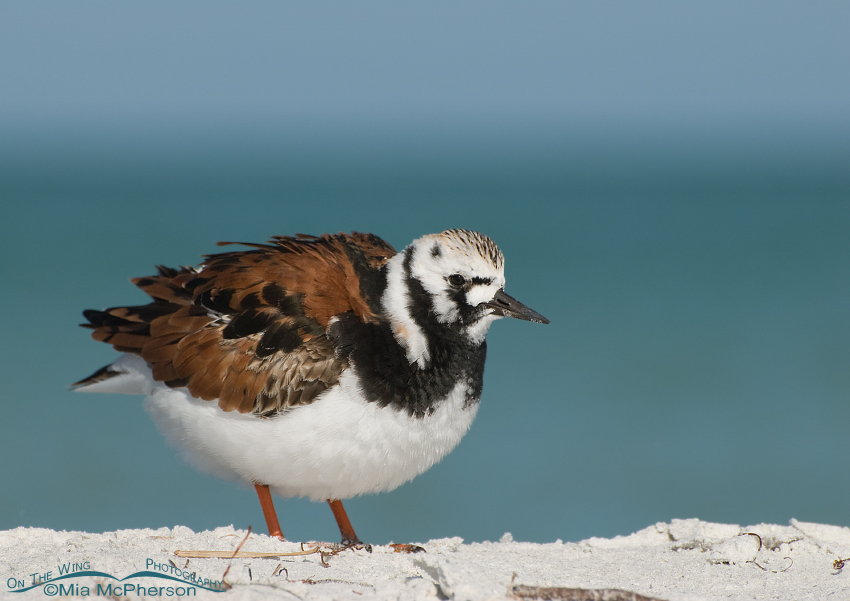 Ruddy Turnstone in nonbreeding plumage foraging on the beach at Fort De Soto, Florida – D200, handheld, f5.6, 1/2000, ISO 250, 80-400mm VR at 400mm, natural light
Ruddy Turnstone in nonbreeding plumage foraging on the beach at Fort De Soto, Florida – D200, handheld, f5.6, 1/2000, ISO 250, 80-400mm VR at 400mm, natural light
One of the easier medium-sized shorebirds to identify on Fort De Soto’s beaches and tidal mudflats are the Ruddy Turnstones (Arenaria interpres). The only other turnstone that frequents North America is the Black Turnstone and it occurs on the Pacific coast. Ruddy Turnstones breed in the high Arctic on barren grassy habitats, rocky coasts and seem to prefer wide open, barren areas near water. In the winter ruddy turnstones can be found along the Atlantic, Pacific and Gulf coasts and south to the Caribbean and South America.
Even in nonbreeding plumage Ruddy Turnstones stand out from the other shorebirds that you will find at Fort De Soto because of their short orange legs, bright white underparts, and feather patterns. Ruddy Turnstones were named for the reddish plumage on their backs and because they use their short chisel-like bills to turn over stones and shells while looking for small marine invertebrates and crustaceans. They also eat beetles, midges, spiders and some plants during breeding season. It is also know to ingest unattended bird eggs. Outside of the breeding season turnstones can be opportunistic feeders and will include carrion and human garbage in their diet.
 Male Ruddy Turnstone in breeding plumage. Fort De Soto, Florida – D200, handheld, f9, 1/640, ISO 160, 70-300mm VR at 270mm, natural light
Male Ruddy Turnstone in breeding plumage. Fort De Soto, Florida – D200, handheld, f9, 1/640, ISO 160, 70-300mm VR at 270mm, natural light
In breeding plumage Ruddy Turnstones are quite distinctive with bold red patches on their backs contrasting sharply from the bright white chest and striking black feather patterns. The image above was taken in May and it is likely that this turnstone was on its way to the high Arctic to breed. In breeding plumage the coloration of the ruddy turnstone is similar to that of the breeding plumage dunlin, however; they are easy to distinguish because of size, shape, bill shape and leg color.
A colorful shorebird, Ruddy Turnstones are always a pleasure to see and photograph. During migration they have been spotted infrequently in the Great Salt Lake area of Utah, I will have to look for them.
Life is good.
Mia
Click here to see more of my Ruddy Turnstone photos plus facts and information about this species.

